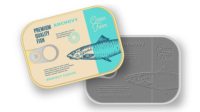While AI is one of the most hyped technologies of recent years, it also comes complete with a new range of confusing acronyms, misunderstandings, and fears. For manufacturers, this often compounds into unnecessary delays as they consider an automation strategy.
At its most basic, manufacturers can consider AI as an additional tool that complements traditional machine vision. Machine vision requires handcrafted algorithms based on detected features. In turn, each product type, or new features, then requires a new formula. Developing this recipe often requires trial and error for the designer.
Machine vision excels at binary decisions, for example pass/fail, but struggles in use cases where there may be some subjective decision-making. A good example is hardwood floor inspection, where machine vision may struggle to discern between naturally occurring grain patterns and scratches.

In comparison, with AI, features are tagged or annotated in a large data set that is used for training. The AI model next learns from these annotations of good and bad, including the tolerances between those decisions. This procedure makes AI much better at subjective decisions, where there can be some allowable tolerances before a product fails. And while machine vision relies on trial and error, AI requires time. It is unusual for an AI algorithm to work seamlessly “out-of-the-box.” The model needs additional training or real-world data to deliver acceptable results.

AI-based Inspection Tools
Two common AI-based applications for quality inspection are object detection and classification. Object detection automatically identifies multiple objects with the same image. For example, the application can be trained to automatically identify that all the features are present on an electronics board as part of an assembly checklist process.
Object detection model development begins with annotation, where vendors offer proprietary and third-party tools to streamline what can be a time-consuming and tedious task. Models can then be optimized to operate on lower power, less costly and resource constrained embedded and edge processing, and subsequently deliver higher accuracy while requiring fewer annotated images. Hard negative mining, for example, adds negative examples to the training set to improve results for difficult-to-train samples where the model is generating false-positives.
With classification, users organize images by a class name (label) and then upload or remove images to a class. Images can be collected from cameras, software, and image libraries. The dataset can be augmented by using different lighting conditions, different camera locations and orientations, rotating objects, making defects manually, etc.
In manufacturing applications classification is used to identify the type of a product. For example, to identify the type of product based on its size and color. This technology is also widely used across other industries to identify types of objects, including security, surveillance, and defense applications.
As AI gains acceptance in manufacturing, a key focus is on usability. Most organizations do not have in-house expertise to develop AI models and applications, nor do they have the financial appetite to continuously engage with system integrators for projects and enhancements. New low-code development tools aim to simplify both AI and machine vision algorithm development for manufacturers. This simplification includes pre-packaged application templates for common inspection requirements that can be customized for products and processes while requiring minimal development skills.
One novel approach to AI model training is to incorporate operator input. A visual inspection application can first be implemented with an image compare application that uses a “golden reference” to highlight potential product differences and deviations with a pixel-by-pixel comparison. The advantage of this application is that it does not initially require any AI training, and only requires a single known good image to deploy. As the operator accepts or rejects those highlighted differences, an annotated image library is created that can be used behind the scenes to train object detection and classification applications.
For more experienced users, developers can use these platforms to fine-tune application templates and import, customize, train, and deploy open-source models. This allows a manufacturer to tailor applications for specific use-cases and avoid vendor lock-in. The shift towards open-source acceptance is a relatively new trend in the manufacturing sector but highlights a desire to gain flexibility in a rapidly developing technology landscape.
Deployment Challenges
Unfortunately, the journey towards automation for most manufacturers looks like a rollercoaster ride. Most start with expectations based on an ideal use case, but quickly run into significant issues.

The application is perhaps not as straightforward as that perfect use case and does require significant customization or training. One common issue is acquiring the images necessary to build and train an AI model, especially for those manufacturers specializing in custom and lower volume products. Acquiring these images can cost an operation time and money.
One of the most overlooked aspects of an automation strategy is forgetting the human. Even with automation, many processes still require a human decision at some point. A good implementation plan includes explaining to an operator why you wish to automate a process and providing the necessary training so they can apply their expertise in new ways.
In a robotic welding application, for example, the goal is to remove the human from the repetitive, dirty, and dangerous work, but still rely on their expert insight and years of training to monitor the process and assess results. Without proper communication and training, humans will be quick to dismiss technology and resist change.
All too often, after the initial AI excitement, a manufacturer ends up back at status quo. In our experience, one common issue is counterintuitive – a plan that is too ambitious. The best automation deployment projects start smaller, and often focus on solving an error-prone human process. As automation professionals, we often forget that about 70 percent of manufacturing tasks in North America fully rely on a human. Typically, manual inspection tasks have errors rates as high as 30 percent.
Adding AI decision-support to these tasks, including visual inspection, work instruction, and traceability tools, can help manufacturers immediately solve quality issues that cost time and money. For example, an electronics manufacturer has deployed AI-assisted visual inspection to catch errors commonly missed by automated optical inspection. Of more value, the company has been able to add traceability to manual inspection by capturing product images and operator notes that helps protect against in-field damage claims.
Multiple vendors now offer turnkey inspection appliances for decision-support that integrate machine vision cameras, lighting, and processing with a simple user interface. More sophisticated offerings add traceability and work instruction applications to provide an end-to-end solution. These solutions are easy to deploy by removing the complexity of machine vision system design. Applications can be trained and then scaled across multiple appliances to ensure consistency across work benches, operator shifts, and locations or deployed on compatible edge processing solutions.
Solving these more fundamental human errors can provide a manufacturer with an immediately measurable ROI, while also providing the data and insight to guide a more fulsome automation strategy. In one example, a manufacturer with a 10-year plan for full production automation first deployed AI-based decision support tools to better understand how their operators make decisions. Gaining data from these initial implementations will be critical in guiding the company’s next and long-term steps.
What’s Next?
It may feel a bit premature to be talking about “what’s next” when we’re only at the very early stages of AI adoption on the manufacturing floor. However, there are some clear considerations as manufacturers ponder the potential for AI technology. In most organizations, there are clear lines of delineation between operation technologies for manufacturing and information technologies for business management. Adding a more data-driven approach to manufacturing will provide key insights as manufacturers adopt a more sensible and informed Industry 4.0 approach.






